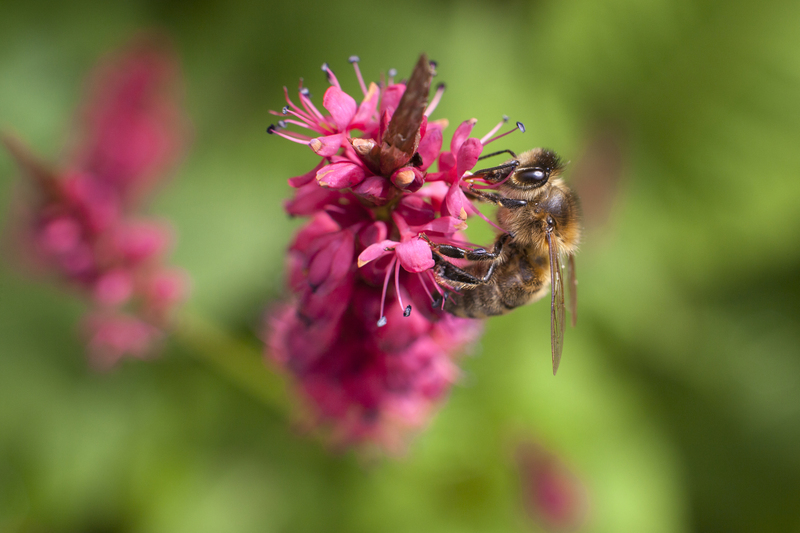Crafting a Calm Zen Garden for a Soothing Atmosphere
Posted on 15/06/2025
Crafting a Calm Zen Garden for a Soothing Atmosphere
Are you searching for inner peace right in your backyard? Exploring the ancient art of Zen gardening might be your path to relaxation. Creating a Zen-inspired garden is more than landscaping--it's an opportunity for mindfulness, calm, and serenity. In this comprehensive guide, we'll walk you through everything you need to know about crafting a calm Zen garden for a soothing atmosphere, including the philosophy behind it, design principles, material selection, step-by-step instructions, and long-term care tips.

The Philosophy of Zen Gardens: Cultivating Inner Peace
The origins of the Zen garden--also known as Karesansui--can be traced back to 11th-century Japan. Unlike lush, ornate Western gardens, Japanese Zen gardens focus on minimalist design, simplicity, and symbolism. Every stone, plant, and grain of sand has meaning, representing mountains, rivers, or islands. Their main purpose is to create a tranquil outdoor space that encourages reflection and meditative calm.
Benefits of a Zen Garden for Mind and Body
- Stress Reduction - The soothing aesthetics and quietude calm the senses, lowering cortisol levels.
- Meditation Aid - The peaceful arrangement invites mindfulness and meditation.
- Improved Focus - Raking sand or arranging stones is a meditative, focusing activity.
- Low Maintenance - Zen gardens require minimal watering and pruning compared to traditional gardens.
- Versatility - They can be adapted for small courtyards, patios, or even desktop versions for indoor tranquility.
Key Elements of a Zen Garden Design
A well-designed calm Zen garden blends various traditional elements to create a harmonious, soothing atmosphere. Here are the essential components that embody the spirit of Zen landscaping:
1. Rocks and Stones: The Backbone of Zen
- Symbolism: Rocks represent mountains, islands, and strength.
- Placement: Stone arrangement should appear natural yet intentional, often in groups of odd numbers.
- Types: Choose weathered stones, granite, or river rocks to evoke nature's timelessness.
2. Sand and Gravel: Evoking Water and Tranquility
- Meaning: Raked sand symbolizes flowing water, rivers, or the vast sea.
- Texture: Use fine gravel or sand for easy raking and a clean appearance.
- Patterns: Different raking styles (waves, ripples, straight lines) represent various water forms, promoting a relaxing atmosphere.
3. Carefully Selected Plants
- Simplicity: Minimal, evergreen plants create peaceful year-round scenery.
- Choices: Bamboo, moss, Japanese maples, and dwarf conifers are excellent for a soothing Zen garden retreat.
- Placement: Assemble in small groups or use single specimen plantings to avoid clutter.
4. Pathways and Bridges
- Flow: Meandering pathways symbolize the journey of life and encourage slow, mindful walking.
- Materials: Flat stones, stepping stones, or wooden planks blend seamlessly with the landscape.
5. Water Features
- Peaceful Sounds: A simple bamboo fountain or small pond can add soothing water sounds, enhancing the calm zen ambiance.
- Symbolism: Water represents renewal and purity, essential concepts in Zen philosophy.
6. Ornaments and Accents
- Lanterns, pagodas, or stone basins can add aesthetic and symbolic value.
- Keep decor understated to preserve the peaceful, uncluttered mood of the garden.
Choosing the Right Location for a Serene Zen Space
Selecting the perfect spot is crucial for creating a relaxing Zen garden atmosphere. Ideally, choose a quiet, private area away from distractions and noise. Whether transforming a backyard corner, patio, or balcony, you can adapt core Zen principles to almost any space.
Sunlight, Shade, and Microclimates
- Most traditional Zen gardens thrive in areas with a balance of sunlight and shade.
- Positioning near walls or fences can offer seclusion.
- Indoor or balcony Zen gardens can be created using containers and simple elements.
Step-by-Step Guide to Crafting Your Calm Zen Garden
Now that you understand the essential elements and philosophy, let's dive into a step-by-step process for creating a calm Zen garden that soothes the senses and promotes relaxation.
1. Planning and Design
- Sketch your garden's layout--label spaces for rocks, gravel, plants, and accent features.
- Decide on a focal point--this could be a large stone, specimen tree, or water feature.
- Keep it simple--avoid overcrowding, and remember that open space is as important as elements themselves in Zen garden arrangements.
2. Preparing the Site
- Clear existing vegetation, debris, or lawn within the designated space.
- Level the ground to create a flat surface; consider installing edging to contain gravel or sand.
- Add weed barriers to keep maintenance low and your meditation space pristine.
3. Laying Down Sand or Gravel
- Pour a 2-4 inch layer of washed gravel or coarse sand over the leveled area.
- Smooth with a rake, aiming for an even surface to accommodate stone placement and pattern creation.
4. Arranging Rocks and Larger Stones
- Start with the largest stones; these serve as "mountains" or focal points.
- Place rocks in groups of odd numbers (usually 3 or 5) for balance and authenticity.
- Partially bury stones for a natural look, as if they've been in place for centuries.
5. Adding Plants for Subtle Color and Texture
- Choose a few low-maintenance evergreens, moss patches, or ornamental grasses.
- Plant sparingly to maintain spaciousness and tranquility; use rocks and sand for visual interest.
- Consider container plantings to add flexibility and control growth.
6. Installing Pathways and Accents
- Lay down stepping stones for walkways, spaced for comfortable strides.
- Add bamboo fences, lanterns, or a simple wooden bench for meditation areas or viewing stations.
- Install a small fountain or water basin if desired, ensuring it blends naturally into your garden.
7. Raking Patterns: The Art of Zen Sand
- Use a wide-toothed rake to create ripples symbolizing water.
- Experiment with different designs, such as concentric circles around rocks or parallel lines for a river effect.
- Change raking patterns occasionally to refresh your mindset and keep the atmosphere engaging.
Tips for Maintaining a Calm Zen Garden
A Zen-inspired landscape is designed for ease of care, but regular maintenance preserves its soothing beauty:
- Keep sand/gravel tidy: Remove fallen leaves and debris regularly.
- Refresh raked patterns after rain or wind.
- Prune plants as needed to retain clean lines and avoid overcrowding.
- Weed control is essential for preserving the uncluttered atmosphere.
- Clean water features to prevent algae or blockages in pumps or spouts.
Mindful Interaction: Making the Most of Your Zen Space
- Use your Zen garden daily for meditation, quiet reading, or peaceful contemplation.
- Raking gravel or sand can be a meditative ritual, promoting calm and focus.
- Practice deep breathing exercises in your garden to deepen its peaceful effects.
Innovative Ideas for Small and Indoor Zen Gardens
Don't have a large yard? No problem! Miniature Zen gardens can bring serenity to apartments, offices, or even desktops. Here's how:
- Tabletop Zen Gardens: Use a shallow dish or tray, miniature gravel, small stones, and tiny rakes. This setting is perfect for stress relief at work or home.
- Vertical Zen Walls: Create a living wall with moss, bamboo, or succulents for a modern, meditative statement piece.
- Terrariums: Glass vessels with sand, moss, and rocks evoke Zen aesthetics in a compact form.
- Balconies and Patios: Use containers and modular elements to design a flexible, portable Zen retreat.
Common Mistakes to Avoid When Crafting Your Zen Oasis
Maintaining the core philosophy and aesthetics is key to achieving a soothing Zen garden atmosphere. Avoid these pitfalls:
- Overcrowding - Too many elements can dilute the sense of calm and spaciousness.
- Bright, clashing colors - Stick to earthy, muted tones for a peaceful look.
- Neglecting symbolism - Every component should have purpose; avoid random, decorative objects.
- Poor maintenance - Allowing weeds or debris to accumulate disrupts tranquility.

Frequently Asked Questions About Zen Gardens
Can I build a Zen garden in a small space?
Absolutely! Zen gardens are highly adaptable. Even a modest corner, windowsill, or tabletop is sufficient for a miniature version, as long as you apply the principles of simplicity and mindful arrangement.
Do Zen gardens require a lot of maintenance?
No, they are generally low-maintenance. Occasional raking, weeding, and minor pruning are usually enough. Ensuring that sand and gravel remain neat is the main task.
What types of plants are best for a Zen garden?
Favor evergreens, slow-growing shrubs, moss, bamboo, and ornamental grasses. Japanese maples provide color without disrupting the restful ambiance.
Why are stone arrangements so important in Zen gardens?
Stones symbolize nature's enduring strength and the immovable aspects of life. Their careful placement guides the garden's energy and your own attention, reinforcing peace and reflection.
Conclusion: Embrace Tranquility with Your Personalized Zen Sanctuary
Crafting a calm Zen garden is about far more than aesthetics. It's a holistic practice that nurtures stillness, encourages mindfulness, and creates a refuge from everyday chaos. By embracing the time-honored principles of Zen landscaping--simplicity, symbolism, careful arrangement, and respect for nature--you'll lay the foundation for a soothing outdoor retreat that relaxes your body, calms your mind, and uplifts your spirit.
So, gather your stones, sand, and quiet determination--it's time to build a Zen space where peace flourishes, one mindful moment at a time.

